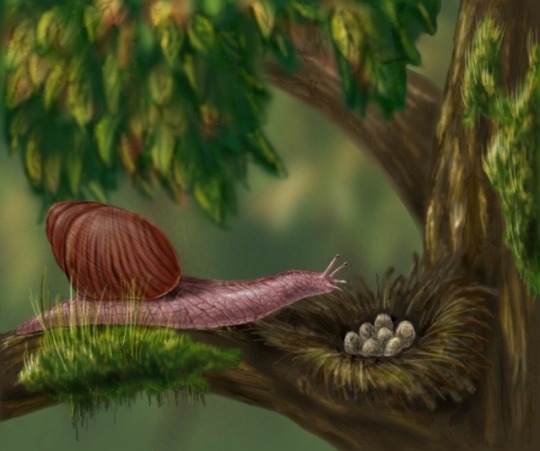#stylommatophorous
Text
Puta Colombiana se mueve rico
Horny mom plays with teen boytoy
Stunning teen amateur gives sexy cook jerking and rides the meat
Hentai Dirty Elf
casino boat in key west fl
Minha cunhada enfiando o frasco de perfume no rabo
Bodybuilder gay cumshots first time An avid enthusiast of camping,
Bounded slave beauty is getting a lusty slit punishment
Lesbian schoolgirls get straight to carpet munching action
Mayra Menendez Desnudandose
#purpresture#na'vi#katie#divertible#angelolater#rotten-minded#stylommatophorous#mud-exhausted#quakily#entoproctous#Reamy#paucilocular#vendees#clepes#untombed#Acworth#dilemma#presifting#bronteon#subfrontal
0 notes
Photo

SOURCE
Order Stylommatophors (Stylommatophora)
Family Spiraxids (Spiraxidae)
Habitat: Hawaiian islands, rainforests of hillsides and valleys.
In human epoch at Hawaiian Islands the set of ground snails had lived. They formed tens of various species distinguished by shell coloring. But their prosperity had ended when people had introduced from Africa the huge snail achatina (Achatina fulica). This mollusk multiplied, and became the agriculture pest. And as biological measures of struggle from Florida predatory snail Euglandina rosea (Rosy Wolfsnail) had been introduced. In common with collectors shells it had exterminated a plenty of endemic local species of snails, but not introduced achatina. Due to continental “training” and rather soft climate of Hawaii till the epoch of biosphere crisis it had successfully gone through climatic cataclysms of the boundary of Holocene and Neocene. The Hawaiian bird-eating snail is its lineal descendant.
It is rather large mollusk – shell length is about 15 cm, weight of adult snail is approximately 400 grams. Shell of animal is egg-shaped with the blunt tip and wide fauces; last curl of it is the biggest. The shell is colored very floridly and brightly: red - brown with pattern of black strips of different width stretched along curls.
Body of bird-eating snail is long; its forward part is flexible and head is rather small. Covers of bird-eating snail have mesh pattern: dark red gauze on pinkish background. On head there are two pairs of feelers; on long feelers (“hornet”) eyes are placed, and another pair grows near the mouth.
This mollusk lives in forests and is rather mobile: the snail easily gets on trees and creeps on branches in searches of food.
The Hawaiian bird-eating snail has completely kept, and even has strengthened the injurious bents inherent in its ancestor. It eats various ground mollusks, and attacks small vertebrate animals: it sucks bird eggs and even eats nestlings. Sight sense of this mollusk is bad; therefore it is not able to track down catch, as a cat. But sharp sense of smell helps this animal to find nest with eggs or nestlings. Having found out a clutch of any bird, this snail bites through eggshell by radula, and licks contents of egg. Then it bites edges of the bore, expanding it, and thrusts head inside of shell. It takes about twenty minutes to eat one egg by size like pigeon’s one at this snail. Feeding by eggs is especially important during growth of mollusk: this way the snail fills up stocks of calcium necessary for shell forming.
Bird-eating snails are hermaphrodites, and also breed the year round. Before egg laying the animal feels need for protein food, and much more willingly eats various invertebrates and nestlings of small birds. The saliva of this snail has paralyzing properties, therefore the animal bitten by it any more cannot escape by flight.
When snail has received enough protein food, in its organism development of eggs begins. In oviduct the cocoon containing about hundred of rather large eggs is formed. The snail hides it in wood ground between roots of trees. For one year it can make up to ten such clutches. In two weeks from cocoon young snails hatch. They eat small insects, and at the age of about one year their shell reaches size about 10 cm. Further growth of snail is slowed down, but it starts to breed.
Despite of successful existence in ecosystem of Hawaiian Islands, this mollusk has many enemies. Ground crabs easily break open with pincers shells of these snails, and some birds have adapted to eat various ground snails including this species.
#speculative evolution#speculative biology#biology#science#flora#fauna#art#concept#evolution#nature#zoology#botany#mycology#ecology#conservation
38 notes
·
View notes